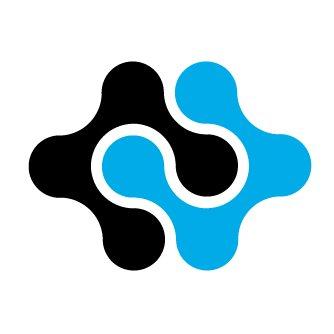Invest in multimillion-dollar art shares
Invest in startups and venture funds
Investments
$3,000
The minimum investment required on Mintus for art investment opportunities is $3,000, with investment amounts typically ranging from $15,000 to $100,000.
Investments
$10,000
The minimum investment amounts on the OurCrowd platform are as follows: $10,000 for individual company investments, $5,000 per company with a $25,000 balance transfer for a Portfolio Select Account, and $50,000 for investing in OurCrowd funds.
Moderate Risk
3/5
Investing in Mintus carries risks such as market volatility affecting art values, limited liquidity options until the secondary market launches, potential regulatory changes impacting investment practices, operational challenges, and the subjective nature of art valuation.
High Risk
4/5
Investing via OurCrowd carries risks, including the potential loss of capital, market fluctuations, and limited liquidity. Early-stage companies may not succeed, leading to a total or partial loss.
Minimum Liquidity
1/5
Mintus plans to introduce a secondary market feature, which is currently marked as "coming soon". This future addition aims to enhance liquidity by allowing investors to sell their shares in artworks to other users, although it's not yet available.
Minimum Liquidity
1/5
Investments on the OurCrowd platform are generally illiquid, as they involve early-stage, privately-held companies. Liquidity events, such as a sale or IPO, may take several years, and there is no guarantee or secondary market for trading these investments. Investors should be prepared for long-term commitments without immediate liquidity options.
Receive new reviews from Fintorial
Moderate Return
8.9 %
Mintus targets an 8.9% annual growth rate for investments, though actual returns may vary due to market conditions and art performance.
Not Predictable Return
N/P
Returns on investments in OurCrowd's early-stage companies and venture funds are highly variable and unpredictable. While there is potential for high returns, given the speculative nature of startup investing, there's also a significant risk of loss.
Long-term Investment
5+ years
Investments through Mintus generally have a long-term horizon, often spanning several years, due to the nature of art appreciation and market trends. Exact duration may vary based on specific artworks and market conditions, with potential for earlier liquidity once the secondary market is introduced.
Long-term Investment
5+ years
Investments through OurCrowd typically require a long-term commitment, often spanning several years to over a decade, due to the nature of startup and venture fund investing.
Who can invest
International
Mintus allows both individual investors and institutions to invest in artworks. Individual investors need to qualify as "high net worth individuals", "sophisticated investors", or "accredited investors" and pass an appropriateness assessment. Institutions like wealth managers and family offices should contact Mintus directly for specific investment options.
Who can invest
International
OurCrowd investments are open to accredited investors as per local regulations, which vary by country. However, residents of Cuba, Iran, Lebanon, North Korea, Syria, and the Crimea Region of Ukraine are excluded from investing through the platform.
Moderate Volatility
3/5
The volatility of assets on Mintus, consisting of high-value artworks, is influenced by art market dynamics, economic factors, and the unique characteristics of each piece, such as rarity and provenance. These elements can cause fluctuations in art valuations, making them inherently volatile investments that require careful consideration.
Moderate Volatility
3/5
Assets on OurCrowd, being early-stage and privately-held companies, are highly volatile. Their valuations can fluctuate significantly due to market dynamics, competition, and operational risks.
Regulation and audits
FCA Regulated
Mintus is authorized and regulated by the Financial Conduct Authority (FCA) in the UK. This regulatory oversight ensures Mintus meets strict standards for investor protection, transparency, and market integrity, although specific audit details are not mentioned.
Regulation and audits
SEC Regulated
OurCrowd complies with the regulations of each country it operates in, adhering to laws governing accredited investors and investment platforms. It is subject to regulatory oversight, ensuring transparency and investor protection. While not specified, financial audits and compliance checks are likely part of its operations to meet legal and financial standards, maintaining trust and reliability among investors.
Insurance
Yes
Details on insurance for artworks on Mintus are not explicitly mentioned. Typically, art investment platforms secure artworks against risks like damage or theft through insurance.
Insurance
No
OurCrowd does not offer insurance for investments on its platform. Investments in startups and venture funds are inherently risky, with no insurance protection against losses.
Payouts
No Recurring Payouts
Mintus does not offer traditional dividends. Instead, investors gain returns through the appreciation and eventual sale of the artworks, receiving profits based on their share ownership.
Payouts
No Recurring Payouts
Investors on OurCrowd typically do not receive dividends from their investments in startups and venture funds, as these are growth-focused and aim for capital appreciation. Profits are usually reinvested to fuel further growth.
Withdrawals
Investors on Mintus receive their returns after the sale of an artwork, with profits made available in their wallet. They can then choose to withdraw these funds to a bank account or reinvest in other artworks on the platform.
Withdrawals
Investors on OurCrowd can get their money back during a liquidity event such as an IPO, acquisition, or sale of the company.
Extra Fees
Yes
Fees on Mintus vary by artwork and investment structure, with all fees shown in advance in the Memorandum document available for each opportunity.
Extra Fees
Yes
OurCrowd's fee structure includes a 2% annual management fee for the first four years, capped to cover investment management costs. Additionally, there's a 4% upfront administration fee for direct SPV expenses, with the possibility of extra reimbursement set off from returns upon distribution. Carried interest entails a 20% fee on profits up to 5x the invested amount, escalating to 25% for proceeds exceeding 5x.
Taxes
Annual Statement
Mintus notes that artworks don't generate income while held, so tax implications mainly stem from capital gains upon sale.
Taxes
Annual Statement
OurCrowd offers investors an annual statement, which is essential for tax reporting. This statement details the year's financial activities, aiding in accurate tax filings.

